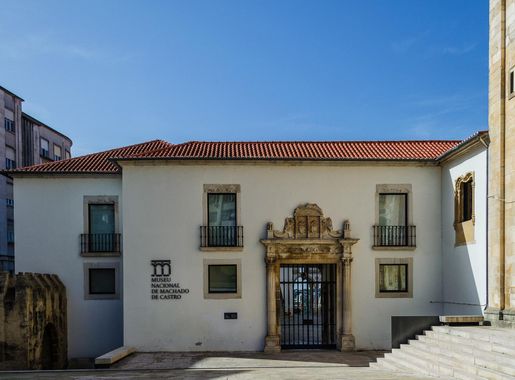
Alta de Coimbra: The Heart of History and Culture
Discover the timeless charm of Alta de Coimbra, where history, culture, and academic legacy converge in the heart of Portugal.
Nestled in the charming city of Coimbra, Portugal, Alta de Coimbra is a neighborhood teeming with historical significance and cultural richness. As you stroll through its narrow, cobblestone streets, you'll be transported back in time, surrounded by centuries-old buildings, ancient churches, and the echoes of academic life. Dominating the skyline is the University of Coimbra, one of the oldest universities in Europe, founded in 1290. The university’s historic buildings, including the Joanina Library with its stunning baroque architecture, are a must-visit. You can also find the Royal Palace of Alcáçova and the awe-inspiring Chapel of São Miguel within the university grounds. Besides its academic heritage, Alta de Coimbra offers plenty of other attractions. Climb the bell tower for breathtaking views over the city, explore the Machado de Castro National Museum, and don’t miss the Se Velha, a Romanesque cathedral dating back to the 12th century. The neighborhood is also home to vibrant cafes and traditional Fado music venues where you can experience the soulful sounds of Portuguese culture. Wandering through Alta de Coimbra, you'll find an irresistible blend of past and present, making it an unmissable destination for any traveler.
Local tips in Alta de Coimbra
- Wear comfortable shoes as the streets are steep and cobblestone-paved.
- Visit the University of Coimbra early in the day to avoid crowds.
- Don't miss the Fado performances in local cafes for an authentic Portuguese experience.
- Allocate time to explore the Joanina Library; it’s one of the most beautiful libraries in the world.
- Check the opening hours of historical sites as they can vary, especially during holidays.
Alta de Coimbra: The Heart of History and Culture
Nestled in the charming city of Coimbra, Portugal, Alta de Coimbra is a neighborhood teeming with historical significance and cultural richness. As you stroll through its narrow, cobblestone streets, you'll be transported back in time, surrounded by centuries-old buildings, ancient churches, and the echoes of academic life. Dominating the skyline is the University of Coimbra, one of the oldest universities in Europe, founded in 1290. The university’s historic buildings, including the Joanina Library with its stunning baroque architecture, are a must-visit. You can also find the Royal Palace of Alcáçova and the awe-inspiring Chapel of São Miguel within the university grounds. Besides its academic heritage, Alta de Coimbra offers plenty of other attractions. Climb the bell tower for breathtaking views over the city, explore the Machado de Castro National Museum, and don’t miss the Se Velha, a Romanesque cathedral dating back to the 12th century. The neighborhood is also home to vibrant cafes and traditional Fado music venues where you can experience the soulful sounds of Portuguese culture. Wandering through Alta de Coimbra, you'll find an irresistible blend of past and present, making it an unmissable destination for any traveler.
Iconic landmarks you can’t miss
Palace of Schools
Discover the architectural marvel and historical significance of the Palace of Schools in Coimbra, a UNESCO World Heritage site that captivates every visitor.
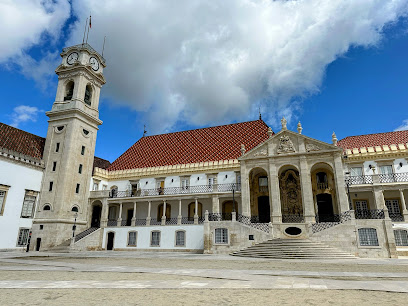
Sé Velha - Coimbra
Discover the architectural beauty and historical significance of Sé Velha, Coimbra's stunning cathedral and a UNESCO World Heritage site.
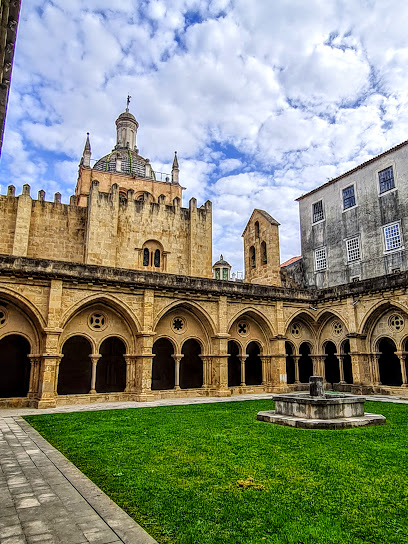
Barbican Gate
Explore the enchanting Barbican Gate in Coimbra, a majestic historical landmark that showcases the rich heritage and architectural beauty of Portugal.

Tower of University of Coimbra
Explore the Tower of the University of Coimbra: A historical landmark offering breathtaking views and rich academic heritage in the heart of Portugal.
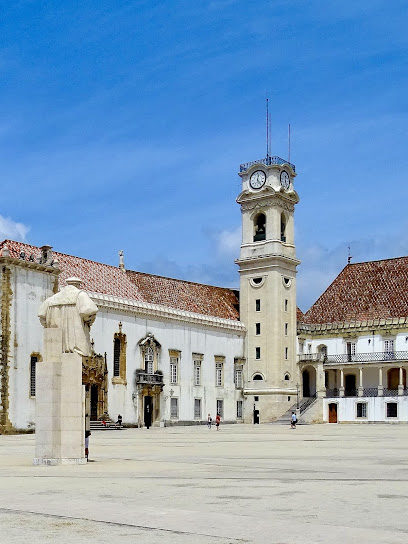
Escadas Monumentais da Universidade de Coimbra
Discover the stunning Escadas Monumentais at Coimbra University, a historical landmark embodying Portugal's rich academic and architectural heritage.
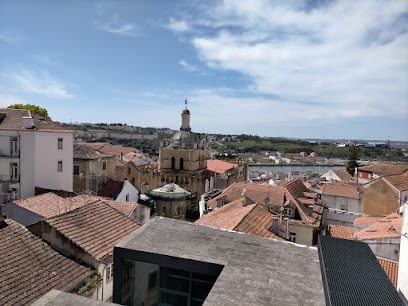
Porta e Torre de Almedina
Explore the majestic Porta e Torre de Almedina, a historic gateway in Coimbra that offers stunning views and a glimpse into Portugal's medieval past.
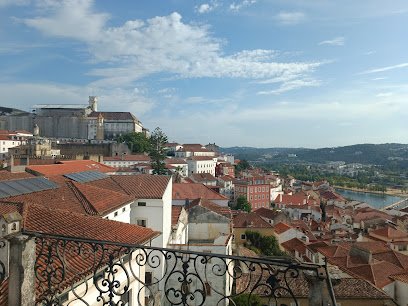
Dom Dinis
Discover the historical and artistic significance of the Dom Dinis sculpture in Coimbra, a captivating tourist attraction in Portugal's cultural heart.
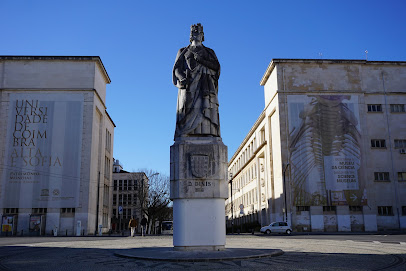
Torre de Anto
Explore Torre de Anto, a captivating historical landmark in Coimbra, Portugal, and immerse yourself in the region's rich culture and stunning views.
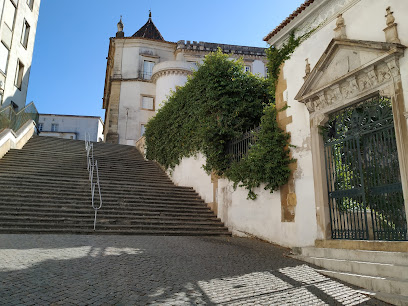
Arco de Almedina
Discover the historical charm of Arco de Almedina, Coimbra's medieval gateway that connects the past with the vibrant pulse of the city.
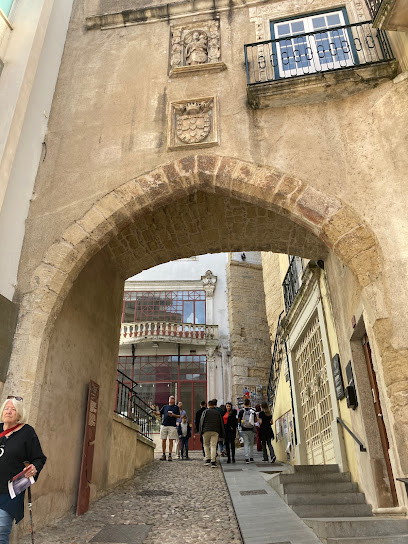
Oliveira centenária de Coimbra
Discover the ancient Oliveira Centenária in Coimbra, a living monument of history and nature, perfect for tranquil visits and memorable photographs.
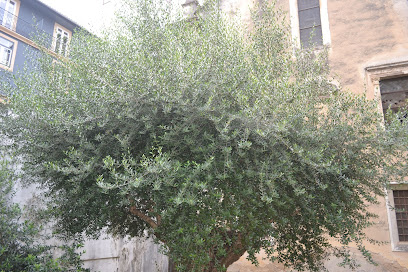
Unmissable attractions to see
Portugal dos Pequenitos
Experience the charm of Portugal through miniature landmarks and family-friendly attractions at Portugal dos Pequenitos in Coimbra.
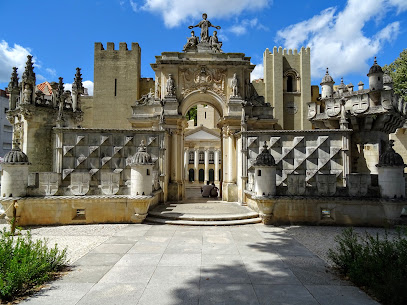
National Museum Machado de Castro
Explore Portugal’s artistic heritage at the National Museum Machado de Castro, a treasure trove of cultural and historical masterpieces in Coimbra.
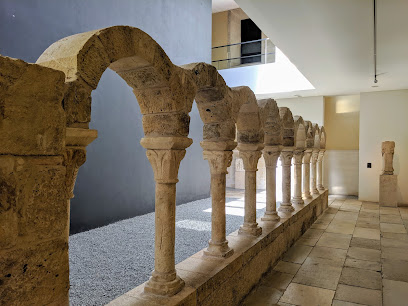
Museu da Ciência da Universidade de Coimbra
Explore the Museu da Ciência da Universidade de Coimbra, a fascinating science museum celebrating human innovation and the wonders of the natural world.
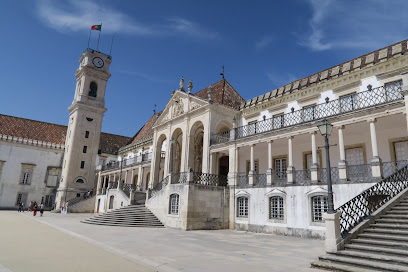
Escadas Monumentais da Universidade de Coimbra
Experience the grandeur of the Escadas Monumentais, a historic staircase that connects the vibrant Praça da República to Coimbra's prestigious university.
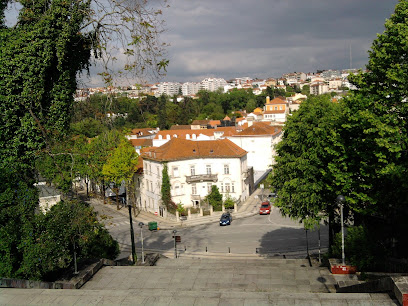
Torre de Anto
Explore Torre de Anto, a historical landmark in Coimbra, and immerse yourself in the rich heritage and stunning architecture of Portugal.
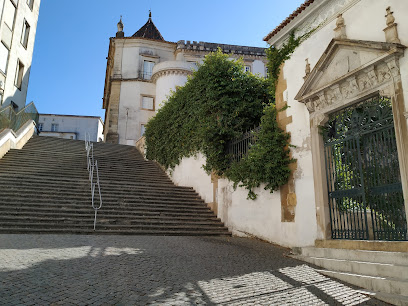
Viewpoint
Discover the stunning vistas of Coimbra from this breathtaking viewpoint, a must-visit destination for every traveler seeking beauty and tranquility.
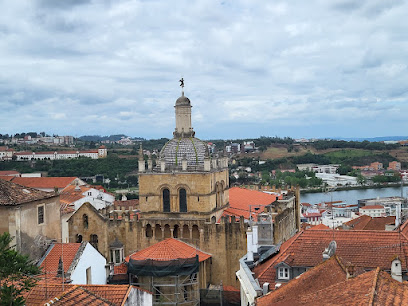
Oliveira centenária de Coimbra
Explore the Oliveira centenária de Coimbra, a centuries-old olive tree symbolizing resilience in the heart of Portugal's historic city.

Mural de Afonso Macedo
Discover the artistic brilliance of the Mural de Afonso Macedo, a vibrant tribute to Portuguese culture in the heart of Coimbra.

Essential places to dine
Restaurante Solar do Bacalhau
Experience authentic Portuguese flavors at Restaurante Solar do Bacalhau in Coimbra - a culinary delight not to be missed.

Restaurante Zé Manel dos Ossos
Discover the rich flavors of Portuguese cuisine at Restaurante Zé Manel dos Ossos in Coimbra - where tradition meets taste.
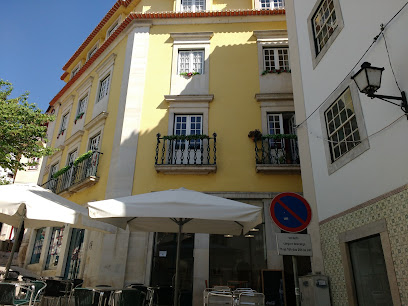
Restaurante Il Tartufo
Experience authentic Italian cuisine at Restaurante Il Tartufo in Coimbra – where every meal is a celebration of flavor and tradition.
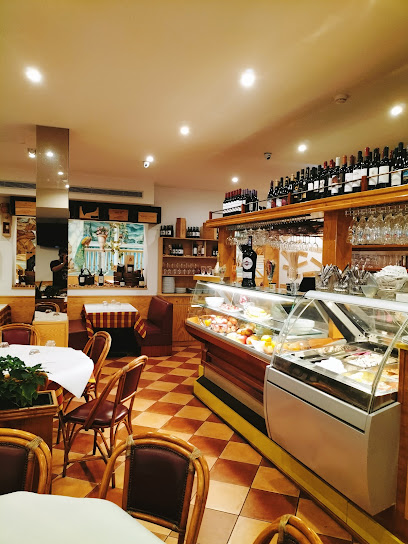
Restaurante Sete
Discover the essence of Portuguese cuisine at Restaurante Sete in Coimbra—where tradition meets taste in every dish.
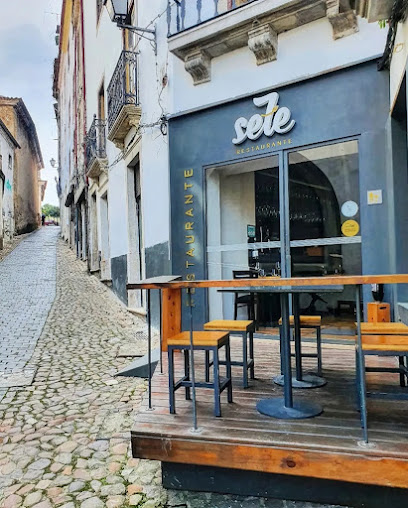
A Cozinha da Maria
Discover authentic Portuguese cuisine at A Cozinha da Maria in Coimbra – where tradition meets flavor.
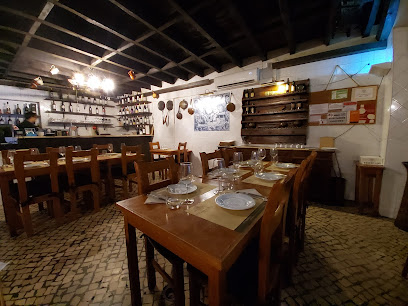
Restaurante Maria Portuguesa
Experience the heart of Portugal through exquisite traditional cuisine at Restaurante Maria Portuguesa in Coimbra.
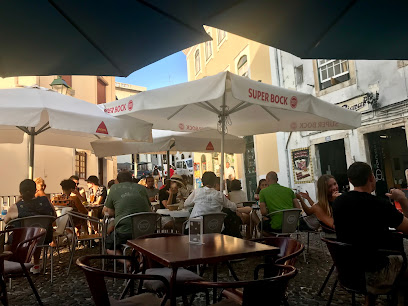
Restaurante O Trovador
Experience authentic Portuguese cuisine at Restaurante O Trovador in Coimbra – a true taste of tradition in a charming setting.
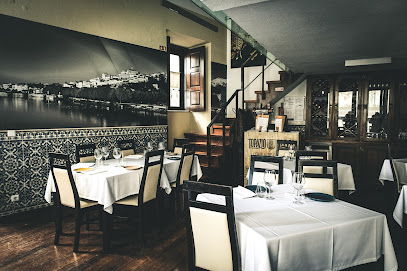
Terraço Da Alta
Indulge in exquisite dishes and breathtaking views at Terraço Da Alta in Coimbra – where culinary excellence meets stunning scenery.
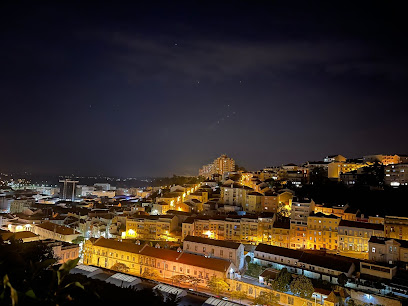
Taberna Laura
Experience authentic Portuguese cuisine at Taberna Laura in Coimbra - where tradition meets flavor in every dish.
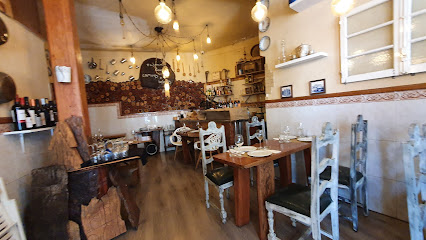
Luca Restaurante
Experience authentic Portuguese cuisine at Luca Restaurante in Coimbra - where tradition meets modern dining.

Markets, malls and hidden boutiques
Forum Coimbra
Explore Forum Coimbra, the largest shopping mall in Coimbra, where diverse shopping, dining, and entertainment await in a vibrant atmosphere.

Alma Shopping
Discover the vibrant shopping experience at Alma Shopping in Coimbra, featuring diverse shops, delightful dining, and entertainment for all.
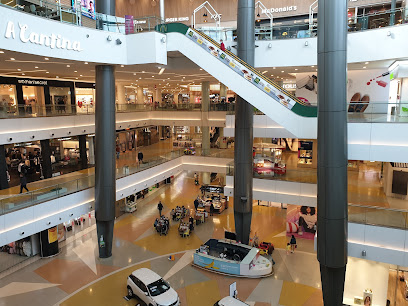
in Vintage
Explore the charm of in Vintage, Coimbra's premier fashion accessories store, where timeless elegance meets modern style.
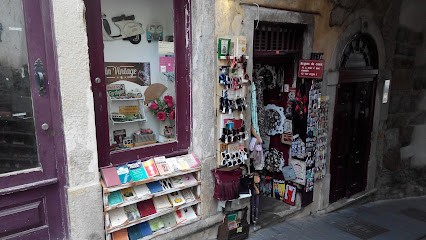
In Vintage Regional
Explore In Vintage Regional, a charming fashion accessories store in Coimbra, where vintage meets modern in a treasure trove of unique finds.

houseandgifts
Discover unique Portuguese souvenirs at House and Gifts in CoimbraShopping, where tradition meets modern shopping.

Portugalidades
Explore the essence of Portuguese culture at Portugalidades, your go-to gift shop in Coimbra for unique souvenirs and local delicacies.
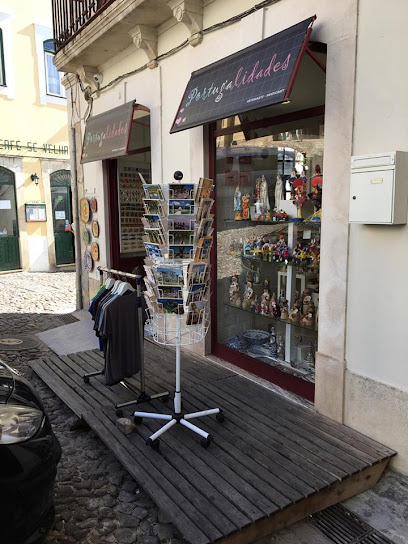
A de Amor - Artesanato Portugués
Explore the essence of Portuguese culture at A de Amor, where handcrafted treasures and unique souvenirs await every visitor.
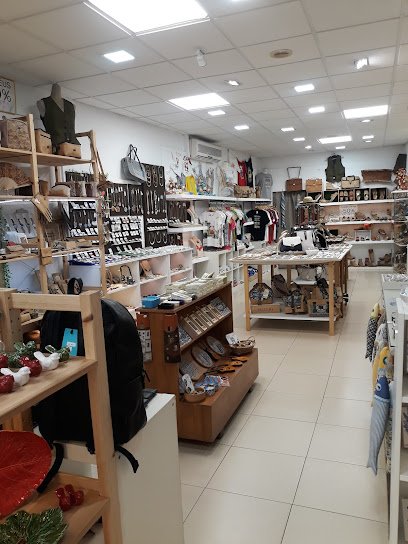
In Vintage Kiosk
Discover unique vintage-inspired accessories at In Vintage Kiosk, a charming store in the heart of Coimbra, perfect for finding memorable souvenirs.

Sortido Lusitano
Discover the authentic taste of Portugal at Sortido Lusitano in Coimbra, a delightful store filled with local delicacies and culinary treasures.
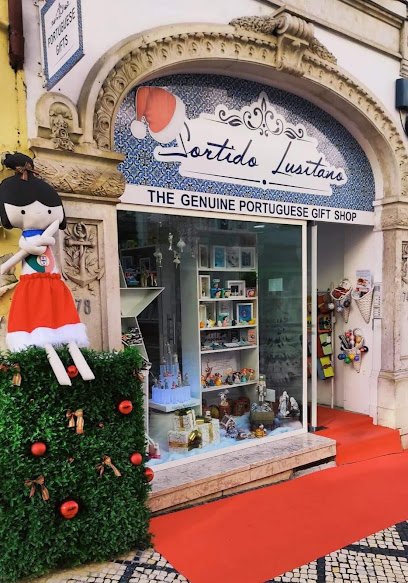
Colecionismo Velharias
Explore the nostalgic treasures of Colecionismo Velharias, Coimbra's premier collectibles store with an eclectic mix of vintage items and antiques.
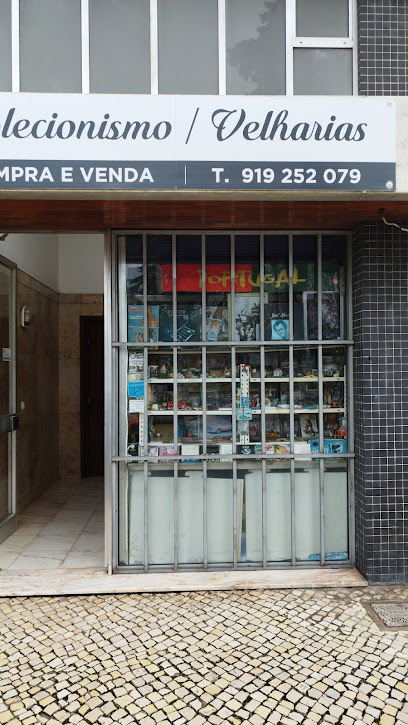
Essential bars & hidden hideouts
Terraço Da Alta
Discover Terraço Da Alta, Coimbra's perfect blend of stunning views and delectable local cuisine in a vibrant atmosphere.
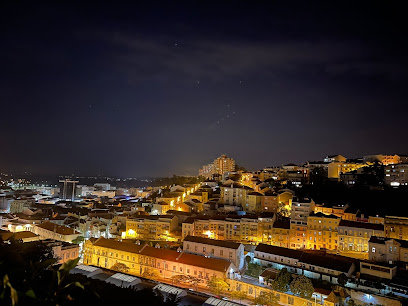
O Moelas
Discover the vibrant nightlife of Coimbra at O Moelas, a cozy bar known for its affordable drinks and lively atmosphere, perfect for socializing.

Liquidâmbar
Experience the vibrant nightlife of Coimbra at Liquidâmbar, where great drinks and lively atmosphere meet.
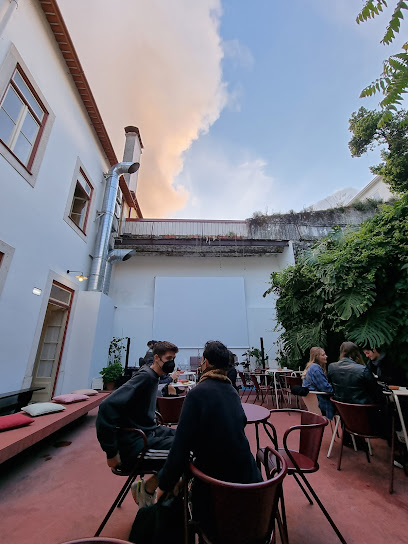
What's up Doc Bar
Discover Coimbra's nightlife at What's up Doc Bar, a lively spot for drinks and socializing in the heart of the city.
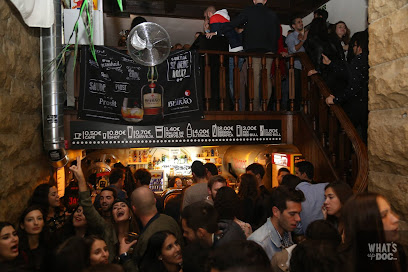
Coola Boola
Discover the vibrant essence of Coimbra at Coola Boola, where craft beer, delightful cuisine, and a lively atmosphere await every visitor.
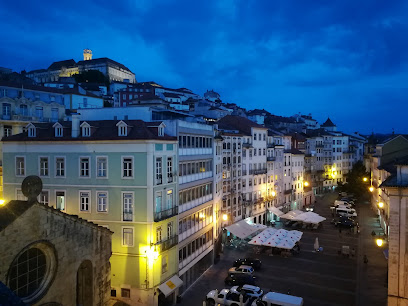
Piano Negro
Experience the vibrant nightlife at Piano Negro, Coimbra's top bar known for its lively atmosphere and extensive drink selection.

Quebra Bar
Experience the vibrant nightlife at Quebra Bar in Coimbra, where delightful drinks and a lively atmosphere await you.
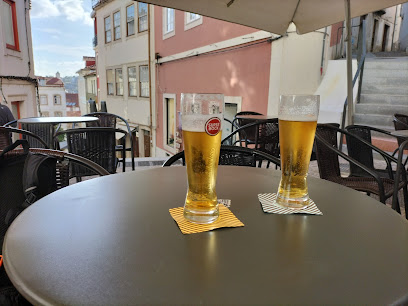
Noster Taberna & Wine Bar
Immerse yourself in the rich flavors of Portugal at Noster Taberna & Wine Bar, Coimbra's premier destination for exquisite wines and delightful tapas.
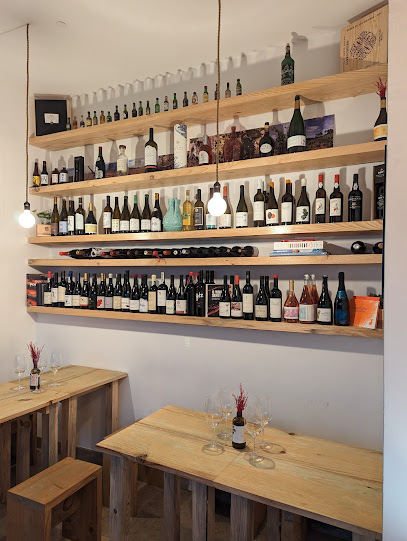
Bar 5° andar
Experience the enchanting views of Coimbra while sipping on exquisite wines and cocktails at Bar 5° Andar.
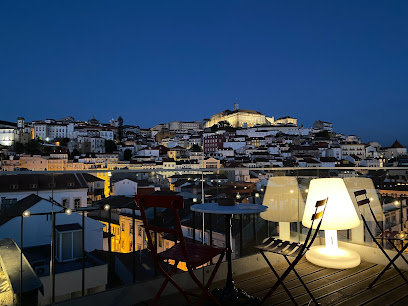
HAKUNA MATATA
Discover Hakuna Matata in Coimbra, a vibrant cocktail bar serving innovative drinks in an energetic atmosphere perfect for socializing and relaxation.
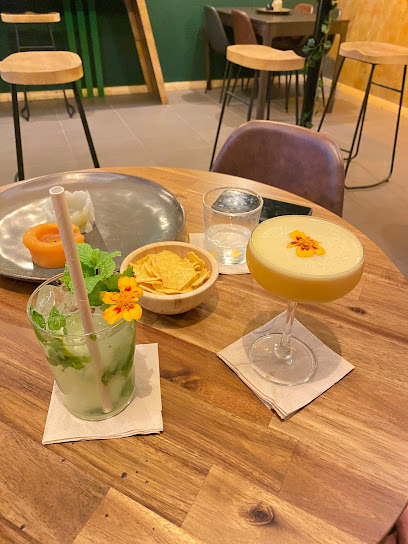
Local Phrases
-
- HelloOlá
[oh-lah] - GoodbyeAdeus
[ah-deh-oosh] - YesSim
[seem] - NoNão
[now] - Please/You're welcomePor favor
[por fah-vohr] - Thank youObrigado
[oh-bree-gah-doo] - Excuse me/SorryDesculpe
[dehs-kool-peh] - How are you?Como está?
[koh-moh ehs-tah] - Fine. And you?Bem. E você?
[behn. eh voh-seh] - Do you speak English?Fala inglês?
[fah-lah een-glehsh] - I don't understandNão entendo
[now ehn-tehn-doo]
- HelloOlá
-
- I'd like to see the menu, pleaseGostaria de ver o menu, por favor
[goh-stah-ree-ah deh vehr oo meh-noo, poor fah-vohr] - I don't eat meatNão como carne
[now koh-moo kahr-neh] - Cheers!Saúde!
[sow-deh] - I would like to pay, pleaseQueria pagar, por favor
[keh-ree-ah pah-gahr, poor fah-vohr]
- I'd like to see the menu, pleaseGostaria de ver o menu, por favor
-
- Help!Ajuda!
[ah-joo-dah] - Go away!Vá embora!
[vah ehm-boh-rah] - Call the Police!Chame a polícia!
[shah-meh ah poh-lee-see-ah] - Call a doctor!Chame um médico!
[shah-meh oom meh-dee-koo] - I'm lostEstou perdido
[eh-stoh pehr-dee-doo] - I'm illEstou doente
[eh-stoh doo-ehn-teh]
- Help!Ajuda!
-
- I'd like to buy...Gostaria de comprar...
[goh-stah-ree-ah deh kohm-prahr...] - I'm just lookingEstou só a ver
[eh-stoh soh ah vehr] - How much is it?Quanto custa?
[kwahn-too koosh-tah] - That's too expensiveIsso é muito caro
[ee-soh eh moo-ee-toh kah-roo] - Can you lower the price?Pode baixar o preço?
[poh-deh by-shahr oo preh-soo]
- I'd like to buy...Gostaria de comprar...
-
- What time is it?Que horas são?
[keh oh-rahsh sah-oh] - It's one o'clockÉ uma hora
[eh oo-mah oh-rah] - Half past (10)Meia hora (10)
[may-ah oh-rah (dehs)] - MorningManhã
[mah-nyah] - AfternoonTarde
[tahr-deh] - EveningNoite
[noy-teh] - YesterdayOntem
[ohn-tehm] - TodayHoje
[oh-zheh] - TomorrowAmanhã
[ah-mah-nyah] - 1Um
[oom] - 2Dois
[doysh] - 3Três
[trehsh] - 4Quatro
[kwah-troh] - 5Cinco
[seen-koh] - 6Seis
[saysh] - 7Sete
[seh-teh] - 8Oito
[oy-toh] - 9Nove
[noh-veh] - 10Dez
[dehsh]
- What time is it?Que horas são?
-
- Where's a/the...?Onde está o/a...?
[ohn-deh ehs-tah oh/ah] - What's the address?Qual é o endereço?
[kwahl eh oh ehn-deh-reh-soh] - Can you show me (on the map)?Pode mostrar-me (no mapa)?
[poh-deh moh-strahr-meh (noo mah-pah)] - When's the next (bus)?Quando é o próximo (autocarro)?
[kwahn-doo eh oo proh-ksee-moh (ow-toh-kah-roo)] - A ticket (to ....)Um bilhete (para ....)
[oom beel-yeh-teh (pah-rah)]
- Where's a/the...?Onde está o/a...?
History of Alta de Coimbra
-
The area now known as Alta de Coimbra has its roots in the early days of Coimbra itself, which was established as a Roman city known as Aeminium. By the time the Moors occupied the region in the 8th century, Coimbra had developed into a significant urban center. Alta de Coimbra became a hub for education and culture, especially with the establishment of the University of Coimbra in 1290, which furthered the area's reputation as a scholarly haven.
-
The University of Coimbra, one of the oldest universities in Europe, has played a pivotal role in shaping the cultural landscape of Alta de Coimbra. Established in 1290, it has been a center for intellectual activity and has influenced various aspects of Portuguese culture, including literature, science, and philosophy. The university's historical buildings, such as the Joanina Library, are located in this neighborhood and showcase the rich architectural styles from different eras.
-
During the 17th and 18th centuries, Alta de Coimbra flourished with the construction of numerous baroque churches and buildings. The most notable among them is the Church of Santa Cruz, which houses the tomb of Portugal's first king, Afonso I. This period marked a significant religious and cultural revival in the area, reflected in the intricate designs and artworks that adorn the neighborhood.
-
The late 18th and early 19th centuries saw a rise in liberal thought influenced by the Enlightenment. The University of Coimbra became a breeding ground for revolutionary ideas, which culminated in the Liberal Wars (1828-1834). Alta de Coimbra was a focal point for these movements, with students and intellectuals advocating for constitutional monarchy and civil rights, shaping modern Portuguese society.
-
Today, Alta de Coimbra is known for its vibrant cultural scene, hosting various festivals that celebrate its rich heritage. Events such as the Queima das Fitas, a traditional student festival, highlight the neighborhood's ongoing connection to education and culture. The blend of historical significance and modern vibrancy continues to define the identity of Alta de Coimbra, making it a living testament to Portugal's past and present.
Alta de Coimbra Essentials
-
Alta de Coimbra is centrally located and easily accessible from other neighbourhoods in Coimbra. If you are arriving by train, the Coimbra-B station serves intercity trains, and from there, you can take a local bus or taxi to reach Alta de Coimbra. The local bus network, operated by SMTUC, connects various neighbourhoods, with lines 3 and 34 being particularly useful for reaching Alta de Coimbra from the city centre. If you are coming from the airport, the nearest major airport is Porto Airport (OPO), approximately 130 kilometers away, from where you can take a train or bus to Coimbra.
-
Alta de Coimbra is pedestrian-friendly, and many attractions can be explored on foot. For longer distances, buses are available, with several routes operated by SMTUC. Bicycles can also be rented from local shops, and several bike lanes make cycling a viable option. Taxis are readily available, and rideshare services operate in the area as well. For those who prefer a more leisurely pace, consider walking to enjoy the charming streets and local architecture.
-
Alta de Coimbra is generally safe for tourists, but it is advisable to take standard precautions. Avoid poorly lit areas at night, especially around the outskirts. While there are no specific high-crime areas targeting tourists, pickpocketing can occur in crowded places, so keep an eye on your belongings. Always stay vigilant and aware of your surroundings, particularly in busy areas.
-
In case of an emergency, dial 112 for police, fire, or medical assistance. Local hospitals include Hospital Geral de Coimbra, located nearby. It’s advisable to have travel insurance that covers medical emergencies. For minor health issues or medication, you can find pharmacies throughout the neighbourhood, often marked with a green cross.
-
Fashion: Do dress modestly, especially when visiting religious sites like the University of Coimbra. Avoid overly casual or revealing clothing. Religion: Do respect local customs and traditions. Always cover your shoulders and legs when entering churches. Public Transport: Do be courteous and offer your seat to the elderly. Don't eat or drink on public transport. Greetings: Do greet locals with a friendly 'Olá' and a smile. A handshake is common; avoid overly familiar gestures unless you know the person. Eating & Drinking: Do try local dishes such as 'chanfana' and 'pastéis de nata', and accept food offerings graciously. Don't waste food or drink in public settings, as it may be considered disrespectful.
-
To experience Alta de Coimbra like a local, visit the local cafés and bakeries where you can enjoy a coffee and a pastel de nata while people-watching. Engage with local residents by participating in community events or visiting markets. Don’t miss the stunning views from the Botanical Garden and the nearby areas of the University of Coimbra. For a unique local experience, try to attend a Fado performance, as Coimbra has its own style of this traditional Portuguese music.
Nearby Cities to Alta de Coimbra
-
Things To Do in Aveiro
-
Things To Do in Tomar
-
Things To Do in Viseu
-
Things To Do in Porto
-
Things To Do in Caldas da Rainha
-
Things To Do in Lamego
-
Things To Do in Vila Real
-
Things To Do in Guimarães
-
Things To Do in Braga
-
Things To Do in Viana do Castelo
-
Things To Do in Ponte de Lima
-
Things To Do in Lisbon
-
Things To Do in Sintra
-
Things To Do in Chaves
-
Things To Do in Évora









